
Ice Baths: A Key to Enhanced Recovery and Vitality for Athletes
Explore how ice baths can boost recovery and enhance vitality for athletes. Discover practical tips and insights to elevate your performance. Read more!
Spend Over £500 To Get Free UK Delivery - Excludes Certain Postcodes & Round Ice Baths
Delivery to Ireland now available
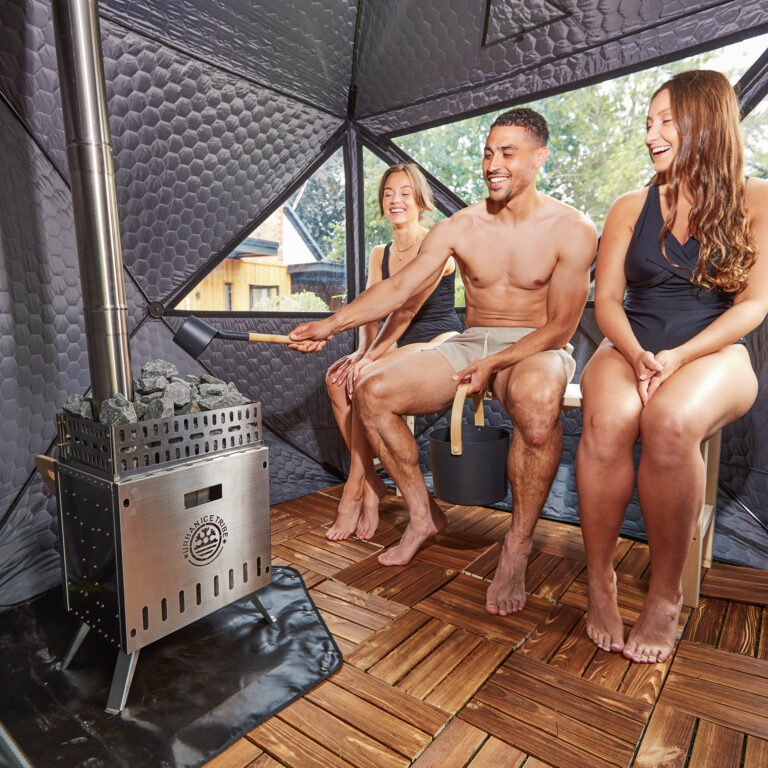
While topical corticosteroids and moisturisers remain the cornerstone of eczema treatment, emerging research suggests that heat therapy through sauna use may offer a complementary approach to managing this chronic skin condition.
The relationship between sauna and eczema represents a fascinating intersection of ancient wellness practices and modern dermatological science. From reducing inflammation markers to improving circulation and stress management, saunas offer multiple pathways that could benefit eczema sufferers seeking a holistic approach to their skin health.
Atopic dermatitis, the most common form of eczema, affects millions of people worldwide as a chronic condition characterised by persistent inflammation and compromised skin barrier function. This chronic skin condition goes far beyond simple dry skin – it represents a complex interplay between genetic predisposition, immune system dysfunction, and environmental triggers.
The immune system in people with eczema reacts abnormally to common substances, creating the characteristic red, inflamed patches typically found on elbows, knees, neck, hands, and ankles. Family history plays a significant role, with many eczema sufferers also having relatives with asthma, food allergies, or environmental allergies.
Environmental triggers can exacerbate eczema symptoms significantly. These include:
The psychological impact cannot be understated. The visible nature of eczema symptoms often affects mental health, creating a cycle where stress worsens flare ups, which in turn increases anxiety and affects overall quality of life.
Understanding how heat therapy affects the body provides insight into why sauna for eczema might be beneficial. When exposed to high temperatures, your body undergoes several physiological changes that can positively impact skin conditions.
Traditional Finnish Saunas operate using dry heat at temperatures between 160-200°F (71-93°C). These saunas heat the air around you, creating an intense environment that promotes rapid sweating. The Finnish sauna experience typically involves short sessions of 10-20 minutes with brief cooling periods.
Infrared Saunas work differently, using infrared light therapy to directly heat your body’s tissues at lower temperatures of 120-140°F (49-60°C). This gentler approach may be better tolerated by people with sensitive skin conditions, as the heat penetrates deeper without the intense air temperature of traditional saunas.
For eczema sufferers, infrared sauna therapy often proves more comfortable due to:
When your body temperature rises during sauna bathing, several beneficial processes occur, and you can further enhance these benefits by taking a cold shower after a sauna:
Vasodilation causes blood vessels to widen significantly, increasing heart rate and improving circulation throughout the body. This enhanced blood flow delivers more oxygen and nutrients to damaged skin areas while removing metabolic waste products.
Sweating serves as a natural detoxification process, helping remove environmental allergens and toxins through the pores. The sweat itself contains antimicrobial peptides that create a protective barrier on the skin surface.
Sympathetic nervous system activation followed by parasympathetic recovery helps regulate stress hormones, particularly cortisol, which can trigger eczema flare ups when elevated.
Research into heat therapy for skin diseases reveals several mechanisms by which saunas may benefit those managing eczema. These benefits extend beyond simple relaxation to include measurable physiological improvements.
Studies demonstrate that infrared sauna use can significantly reduce C-reactive protein (CRP) levels, a key biomarker for systemic inflammation. For eczema treatment, this anti-inflammatory effect may help:
The heat exposure triggers the release of anti-inflammatory peptides while moderating the immune system response that characterises atopic dermatitis.
Enhanced blood flow from sauna use delivers crucial healing components to compromised skin areas. This boosting circulation provides:
The improved microcirculation may also enhance the effectiveness of topical treatments applied after sauna sessions, as the increased blood flow helps active ingredients penetrate more deeply into the skin.
The connection between stress and eczema is well-established, making stress reduction a crucial component of comprehensive eczema treatment. Sauna therapy addresses this through multiple pathways:
Cortisol Regulation: Regular sauna use helps normalise cortisol levels, reducing stress-induced inflammation that can trigger flare ups.
Endorphin Release: The heat stress of sauna sessions stimulates endorphin production, improving mood and creating a sense of well-being that supports mental health.
Sleep Quality: Many people report improved sleep after regular sauna use, and better sleep quality directly correlates with reduced eczema severity.
While the body naturally detoxifies through the liver and kidneys, sweating provides an additional pathway for removing substances that might trigger eczema symptoms. The detoxification process includes:
While sauna therapy offers promising benefits for eczema sufferers, it’s crucial to understand potential adverse effects and take appropriate precautions. Heat therapy isn’t suitable for everyone, and improper use can actually worsen skin conditions.
Over-drying: The primary concern for people with eczema is that sauna heat may strip moisture from already compromised skin barriers. Without proper hydration protocols, this can lead to increased itching and inflammation.
Heat Sensitivity: Some individuals with eczema experience heightened sensitivity to temperature changes. The intense heat of saunas may trigger immediate skin reactions or delayed flare ups.
Dehydration: Excessive sweating without adequate fluid replacement can worsen dry skin and potentially trigger systemic effects like dizziness or fainting.
Certain individuals should exercise extreme caution or avoid sauna use entirely:
Patients using immunosuppressants or biologics for eczema should consult their healthcare provider before beginning sauna therapy, as these medications can affect heat tolerance and immune responses.
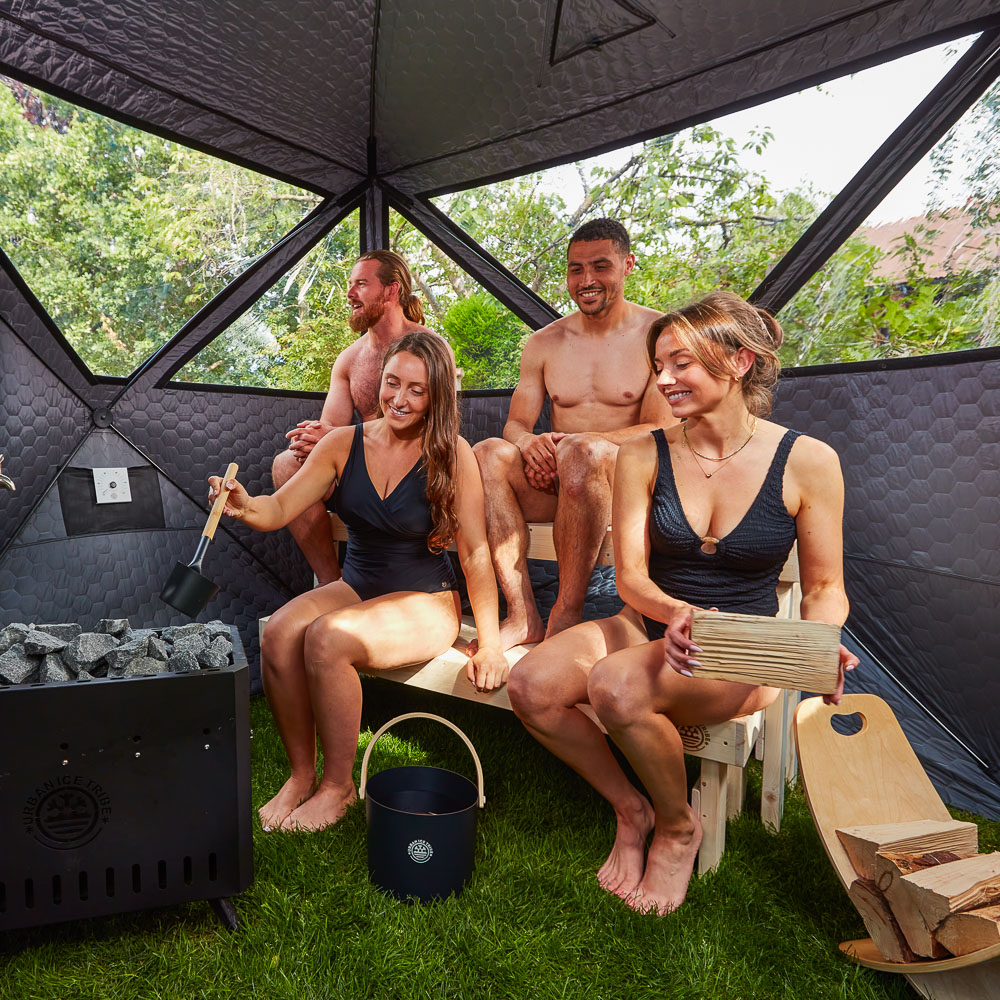
Success with sauna therapy for eczema depends heavily on proper technique and consistent aftercare. Following established protocols maximises benefits while minimising risk of skin irritation.
Hydration: Begin hydrating at least 2 hours before your sauna session. Proper fluid balance helps maintain skin moisture and supports healthy sweating.
Gentle Cleansing: Shower with lukewarm water using fragrance-free, gentle cleansers. Avoid harsh exfoliation that might irritate sensitive skin.
Light Moisturising: Apply a thin layer of fragrance-free moisturiser to particularly dry or vulnerable areas, but avoid heavy applications that might interfere with sweating.
Temperature Assessment: Start with shorter sessions at lower temperatures, especially when beginning sauna therapy or trying a new facility.
Session Duration: Begin with 10-15 minute sessions and gradually increase as tolerance develops. Most eczema sufferers find 15-20 minutes optimal.
Hydration Maintenance: Sip water regularly during longer sessions to replace fluids lost through sweating.
Skin Monitoring: Pay attention to any signs of irritation, excessive itching, or discomfort. Exit immediately if symptoms worsen.
Positioning: Sit on clean towels to minimise contact with potentially irritating surfaces and maintain hygiene.
The period immediately following sauna use is critical for eczema management and determines much of the therapy’s success.
Cool-Down Protocol: Take a lukewarm (not cold) shower to remove sweat and gradually lower body temperature. Sudden temperature changes can trigger skin reactions.
Immediate Moisturising: Apply a rich, fragrance-free moisturiser while skin is still damp. This helps trap moisture and support skin barrier repair.
Continued Hydration: Drink plenty of water for several hours after your session to support recovery and maintain skin hydration.
Monitoring: Observe your skin for 24-48 hours post-session for any delayed reactions or changes in eczema symptoms.
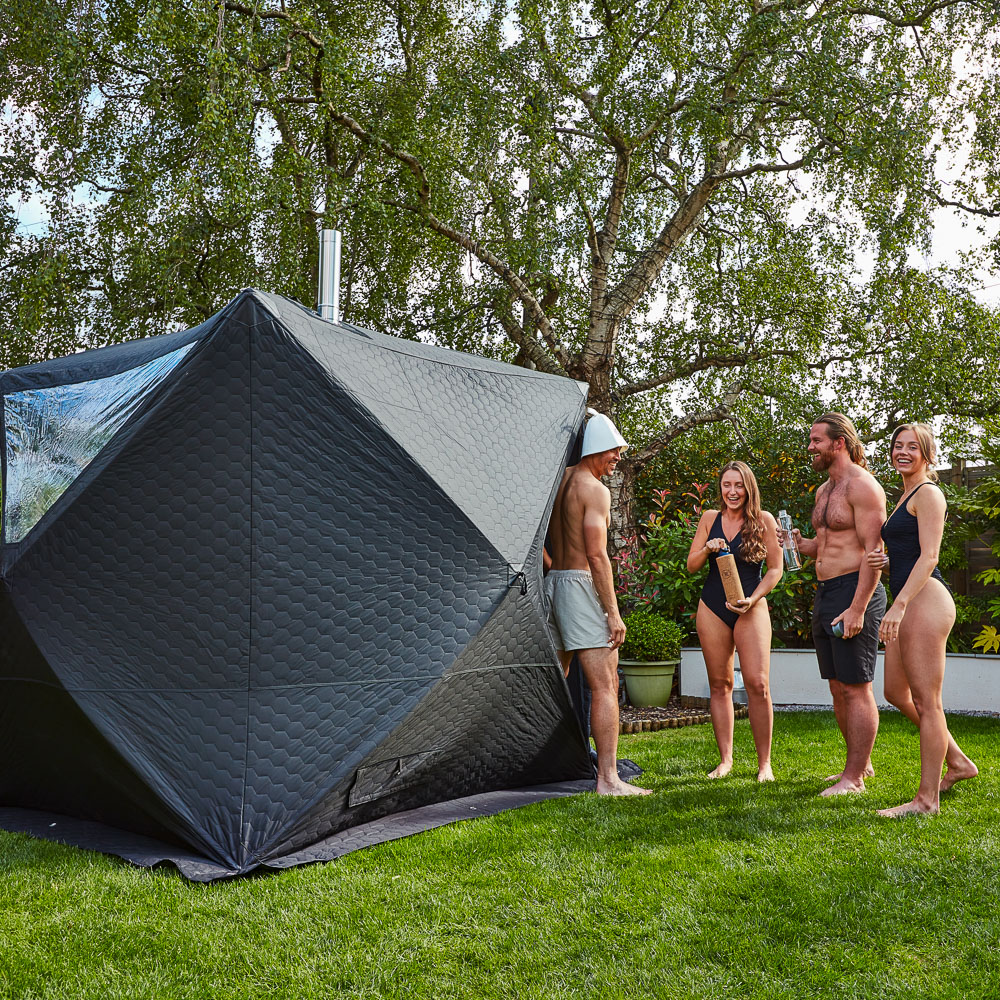
Sauna therapy works best as part of a comprehensive approach to managing eczema rather than as a standalone treatment. Proper integration with existing medical treatments can enhance overall outcomes.
Pre-Treatment Application: Some topical corticosteroids or other medications may be applied before sauna sessions to enhance absorption through heat-induced vasodilation.
Post-Session Application: The increased circulation following sauna use may improve the penetration and effectiveness of moisturisers and prescribed treatments.
Coordination with Flare Management: During active flare ups, adjust sauna frequency and intensity based on skin condition and response to standard treatments.
Successful integration requires open communication with your healthcare provider:
Treatment Planning: Discuss sauna therapy plans during regular appointments and modify protocols based on your skin’s response.
Symptom Tracking: Maintain a detailed diary documenting sauna sessions, skin condition, and any changes in eczema symptoms.
Medication Interactions: Review potential interactions between sauna use and any prescribed medications, particularly immunosuppressants or biologics.
Safety Monitoring: Report any worsening symptoms immediately and be prepared to modify or discontinue sauna therapy if recommended.
Clinical observations and patient reports suggest that consistent sauna therapy, combined with proper skin care, can provide meaningful relief for many eczema sufferers. However, individual responses vary significantly, and realistic expectations are crucial for success.
Most people who benefit from sauna therapy for eczema report:
Response to sauna therapy depends on multiple factors:
The key to success lies in patient experimentation with proper safety protocols and realistic expectations about outcomes.
While saunas offer unique benefits, other heat-based treatments may also support eczema management, providing options for people who cannot tolerate sauna conditions.
Therapeutic baths with controlled temperature (around 98-100°F) can provide gentle heat exposure with added moisture. Benefits include:
Steam rooms provide moist heat rather than dry heat, which may benefit some people with xerotic (dry) eczema. However, the high humidity can also trigger reactions in those sensitive to moisture or prone to fungal complications.
For localised eczema, warm compresses or infrared therapy devices allow precise treatment of affected areas without full-body heat exposure. This approach minimises systemic stress while providing targeted circulation benefits.
How often should I use a sauna if I have eczema?
Most dermatologists recommend starting with 1-2 sessions per week and gradually increasing to 2-3 times weekly based on skin tolerance. Consistency matters more than frequency for long-term benefits.
Can children with eczema safely use saunas?
Pediatric sauna use requires extreme caution and should only be considered with paediatrician’s approval. Children have different thermoregulation and may not communicate discomfort effectively, making supervision crucial.
What temperature is best for eczema sufferers?
Infrared saunas at 120-130°F are generally better tolerated than traditional saunas. Start at the lower end of the range and adjust based on your comfort and skin response.
Should I shower before and after sauna sessions?
Yes, showering before removes surface irritants and allergens, while post-sauna showering removes sweat salts that could irritate sensitive skin. Use lukewarm water and gentle, fragrance-free products.
Can sauna use replace my topical eczema medications?
No, sauna therapy should complement, not replace, prescribed treatments. Always maintain your established medical regimen and consult your dermatologist before making changes.
What should I do if my eczema gets worse after sauna use?
Discontinue sauna sessions immediately and consult your healthcare provider. Some people may not tolerate heat therapy, and continued use despite worsening symptoms can lead to more severe flare ups.
Are there specific times of day that are better for sauna sessions?
While there’s no definitive research on optimal timing, many people report improved sleep quality when using saunas in the evening. Choose times that fit your daily routine and allow for proper post-session skin care.
How long does it take to see improvements in eczema symptoms?
Individual responses vary significantly, but most people who benefit notice some improvement within 4-8 weeks of regular use. Some may see changes sooner, while others require longer periods to observe benefits.
The relationship between sauna and eczema represents a promising frontier in complementary eczema treatment, offering multiple pathways for symptom relief through anti-inflammatory effects, improved circulation, and stress reduction. While not suitable for everyone, many eczema sufferers find that properly implemented sauna therapy provides meaningful support for their skin health journey.
Success with sauna therapy requires patience, proper technique, and realistic expectations. The key lies in starting slowly, maintaining consistent post-session skin care, and working closely with your healthcare provider to integrate heat therapy safely with your existing eczema treatment plan.
Remember that eczema is a complex, chronic condition with highly individual triggers and responses. What works for one person may not work for another, and sauna therapy should always complement, never replace, evidence-based medical treatments.
If you’re considering adding sauna therapy to your eczema management strategy, start your journey by discussing the option with your dermatologist. Together, you can develop a safe, effective approach that fits your specific needs and helps you take control of your skin health.

Founder of Urban Ice Tribe

Explore how ice baths can boost recovery and enhance vitality for athletes. Discover practical tips and insights to elevate your performance. Read more!
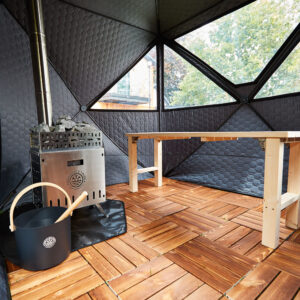
There’s nothing quite like the raw, elemental power of a pop-up sauna. Portable, authentic, and deeply restorative, it’s the perfect way to reconnect with nature and yourself. But to take your sauna ritual to the next level, the right sauna accessories can make all the difference.
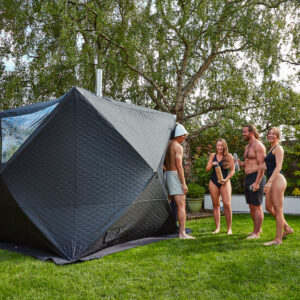
Transform your outdoor space into a personal wellness retreat with the Urban Ice Tribe Sauna Tent. This detailed setup guide walks you through every step, from unboxing to your first steam session, blending practical instruction with the mindful ritual of heat therapy.
Helping men & women release anxieties & limiting beliefs to experience a life of freedom using powerful breathwork, cold water therapy, movement & sound healing.

No spam, notifications only about new products, updates, offers and announcements.